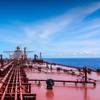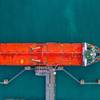Time charter rates in the smaller chemical tanker vessel sizes are expected to remain stable over the next two years, but rates for the larger sizes, especially MRs, will decline due to the impact of falling clean petroleum products (CPP) freight rates, according to the latest edition of the Chemical Forecaster, published by global shipping consultancy Drewry.
Weakened chemical tanker freight rates in the second quarter of 2016 have resulted in softer time charter rates.
Drewry anticipates a modest improvement in the CPP market in the next two quarters, but expects chemical tanker freight rates to remain weak in the third quarter with a pick up in the fourth quarter of this year.
This is because demand from China will reduce as plants shut down from end-August to early September for the G20 summit.
The chemical tanker fleet grew at a CAGR of 4.2% from 2010 to 2015, and is expected to grow at a slower rate of 3.5% annually from 2015 to 2020. However, the fleet growth will slow from 2018 as new orders have already started to moderate.
A total of 114 ships with deadweight of just over four million tonnes were delivered in the first half of 2016. The number of deliveries in 2016 will exceed those of each year since 2010, and the entire fleet is getting younger with an average age of 9.8 years.
The charter market for MR chemical tankers has been cooling off. Earnings and rates of IMO 2 MR tankers have been better than those of smaller chemical tankers, as these MRs also have the option of trading in the CPP market.
The Brexit vote created uncertainty in the European petrochemical industry which may dampen demand from this region. In addition, falling demand from China due to plentiful domestic supply, and an expected decline in vegoil exports from South America will reduce the demand for MR chemical tankers into the next year.
Another 100 MR vessels are scheduled for delivery by 2017, in addition to the existing 1,085 MR chemical tankers aggregating 52 million dwt in the fleet, which will squeeze freight and time charter markets.
“We expect freight rates and time charter rates for coated MR chemical tankers to continue to drop over the next few years. For anyone contemplating investment in shipping, MR chemical tankers could be one of the most unattractive sectors today”, commented Hu Qing, Drewry’s lead analyst for chemical shipping.










